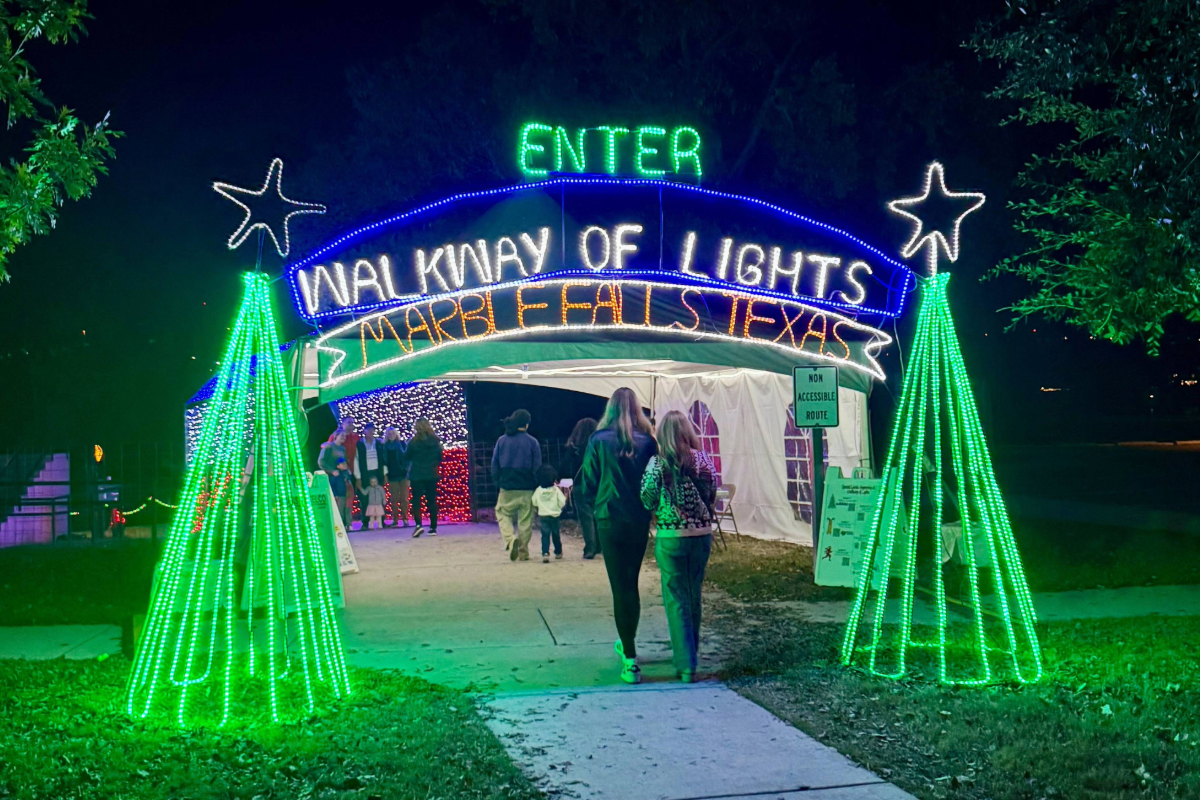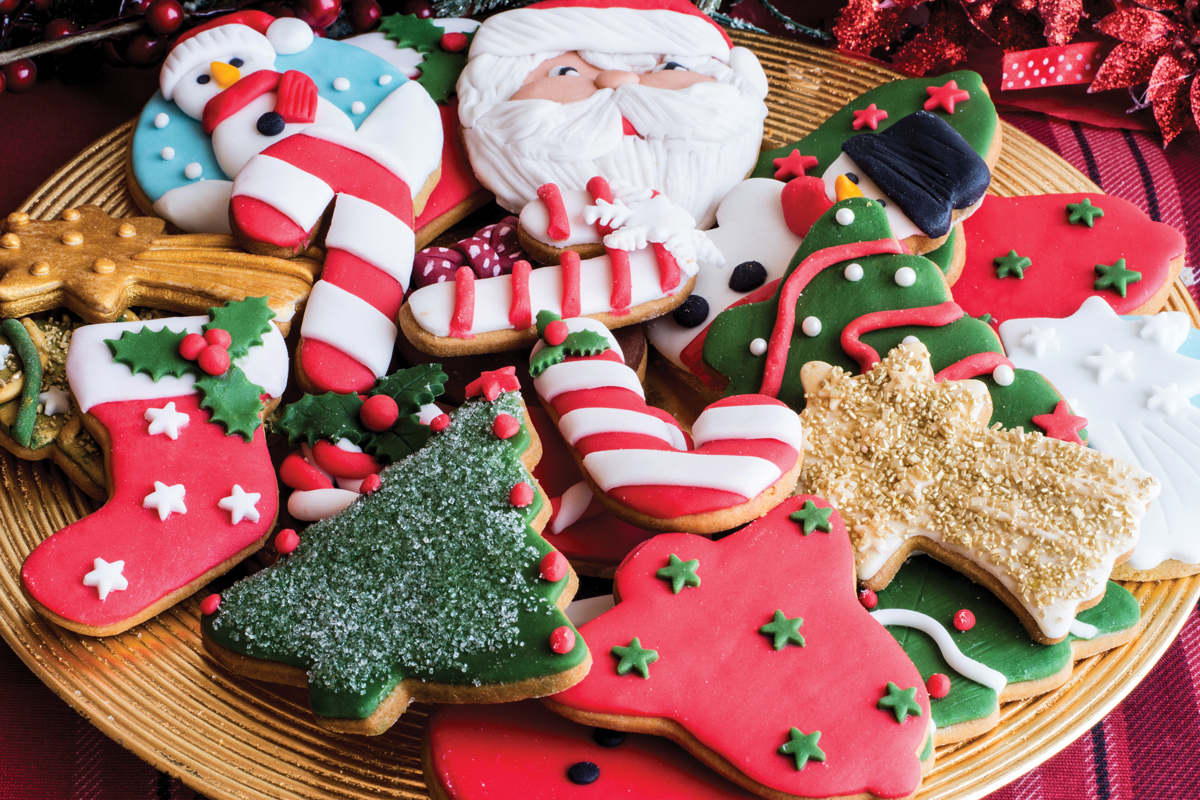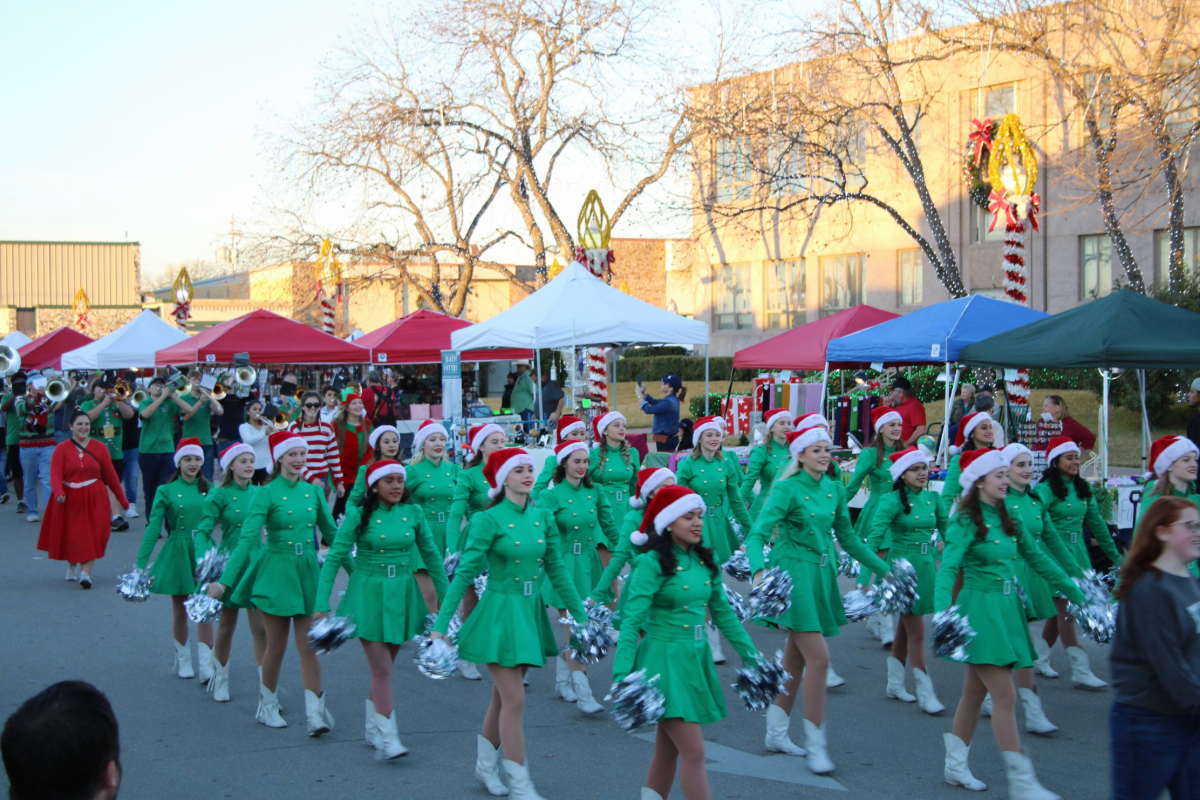
At the Lyndon B. Johnson State Park and Historic Site’s Sauer-Beckmann Farm, the Christmas tree is always a locally cut cedar. Photo courtesy of LBJ State Park and Historic Site
Choosing just the right Christmas tree can be one of the most important decorating decisions of the holiday season. While artificial trees offer a number of benefits, including being easy to set up and take down, you might also consider a traditional cut tree or an eco-friendly living tree.
“I think people still enjoy a real tree,” said Hannah Kellogg, a park ranger at Lyndon B. Johnson State Park and Historic Site’s Sauer-Beckmann Farm, a living history exhibit.
Each year, park staff and volunteers deck the farm in decorations similar to what early 20th century Hill Country residents would have used.
As for the tree, they choose what was — and still is — readily available: an Ashe juniper, more commonly known as cedar.
The park selects and cuts down a worthy tree close to Christmas because cedar can dry out quickly. Under the right conditions, however, you can keep cedar trees and boughs green and fresh for several weeks.
A locally sourced cedar is not on everyone’s list for Christmas, especially considering allergies. Not to worry. A variety of cut trees can be found at local retailers.
You can also purchase a living Christmas tree that can become part of your landscape after the decorations are removed.
“Living Christmas trees will be a costlier option but will provide many years of enjoyment when the proper species is selected and planted with care after the holidays,” said Dr. Fred Raley, Ph.D., the tree improvement coordinator at the Texas A&M Forest Service’s forest science laboratory. “The main focus when selecting a living Christmas tree is whether the species selected is adapted to your local area.”
A good choice for the Highland Lakes is an Eldarica, or Afghan, pine. It’s a sturdy tree with wider and more spaced out branches than a Virginia pine, which grows better east of Interstate 35.
Another option is a Leyland cypress, although it requires more water than an Afghan pine and prefers rich black soil or sandy loam.
Living Christmas trees come in a burlap rootball or a container. If you’re using it indoors, Mike Arnold, professor of landscape horticulture at Texas A&M University's Department of Horticulture Science, recommends putting down a barrier between the tree and your floor to protect your home from water leakage.
Even living trees should not go up too early or stay too long after Dec. 25, Arnold continued. Living trees can be coaxed out of their winter dormancy in a heated environment and begin adding new growth. Once you plant it outside in the cold, the tree could be damaged.
“A week to 10 days is probably the longest to keep it inside,” he said. “When using a live tree, you’re bringing it into an environment where it’s warm and it could ‘wake up,' and we don’t want to stimulate any new growth.”
With living trees, you also have to make sure the rootball is moist. Indoor heating tends to dry out the container or rootball. Another caution: Don’t over water it.
As for decorating a living Christmas tree, Arnold recommends cooler lights such as LED, again to discourage new growth.
When planting the tree in your yard, Arnold said to dig a hole that’s deep enough for the roots but not so deep that you sink the crown below the surface. Once it’s planted, put some mulch around it but don’t fertilize it during the winter. If the weather remains dry, give it some water.
“You can check it with your finger,” Arnold said. “If you stick your finger near the base of the tree and it’s moist, don’t water. If it’s dry, give it some water.”
For those wanting something to replant that’s smaller than a tree, he suggested a table-top tree or a potted rosemary bush. Both are easier to keep indoors and make a great addition to your landscape after the holiday.
“Living Christmas trees make for a nice option,” Arnold added. “It really all starts with getting one suited for your area.”
daniel@thepicayune.com













